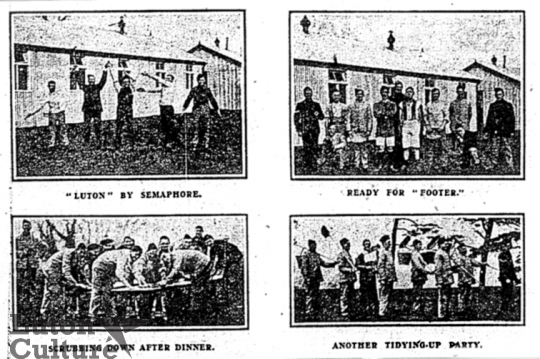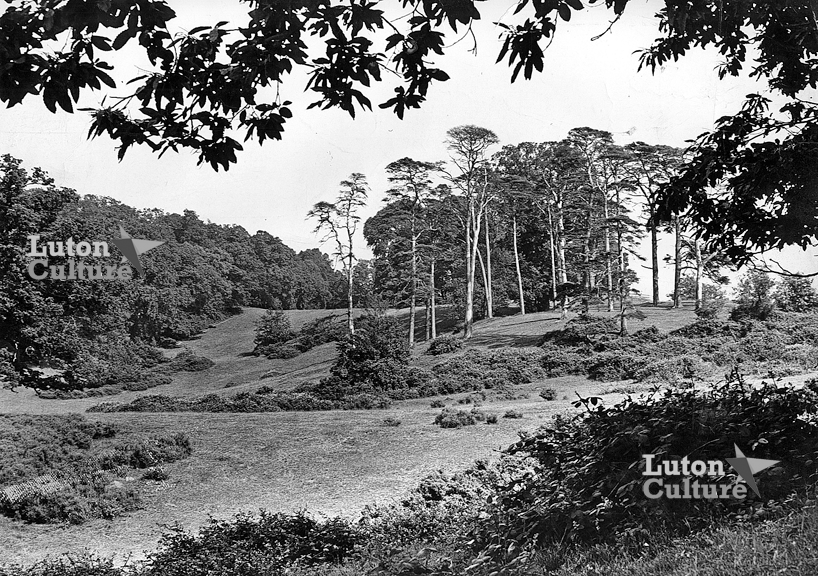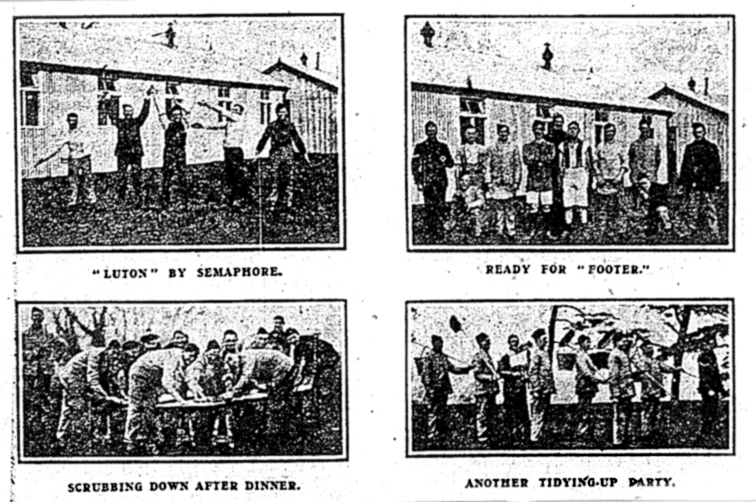Ampthill Park Training Depot
Current Location
Classification
Source

The Duke of Bedford created a showpiece military training camp for the Bedfordshire Regiment at Ampthill Park - and Luton men were among the first 300 to experience what The Luton News described as "the place" for recruits.
The Duke, a colonel of the regiment, was in command of the training depot, which he had established and was financing.
A reporter, accompanied by Luton photographer W. H. Cox, was invited to inspect the facilities on offer, including the substantially built huts to accommodate up to 24 men. Felt insulated the outer and inner walls, the floors were raised above the ground, water was laid on, there was acetylene gas for lighting, and stoves to keep the building warm. The beds had spring mattresses and were made up with ordinary domestic blankets so that "comfortable sleeping is assured".
"Old hands" who had had experience of other places knew they had dropped on their feet at Ampthill, wrote the reporter. But he found one non-commissioned officer, a hardened Regular, who thought the facilities were perhaps "too soft" for youngsters and it might have been better had they had things a bit hard to fit them for their future work.
The recruits' day began with reveille at 6 am and until breakfast at 7.30 the men were rolling up bed clothes and generally cleaning up. Drill was from 8 am until 8.45 with Swedish drill and free gymnastics from 9 till 10.
From 10.15 to 10.45 each hut was given a lecture connected to the soldiers' work. This was followed at 11 am by a commanding officer's parade, before another period of drill took the men on to 12.40, and five minutes later dinner was served.
At 2 pm there was another parade, and after this some recruits had other duties to perform, such as signalling, company drill, squad drill and physical training, while others took to the football field. Tea was at 4.45, supper at 8 o'clock and lights out at 9.30.
The men were uniformed in blue to save their Army uniforms while they were at work in the camp. The Duke had presented each man with a suit of canvas overalls plus a pair of comfortable slippers for use when they were not in barrack rooms.
Meals were well above the norm for a training camp. All catering was done by a Bedford firm, who created the required number of meals at the cookhouse for orderlies to collect.
Breakfast included ham, brawn or fish, for instance, which varied from day to day, plus either tea or coffee. For dinner, roast joints were varied from day to day, always accompanied by vegetables and followed by pudding and tea and jam.
As an extra, supper was provided, a meal not recognised in the usual Army arrangements. It may be hot soup or only bread and cheese, but either was appreciated.
Organised games formed a part of the regular daily programme, with football predominating. A football league had been organised with each hut entering a team. One match each afternoon was the general rule but two could be played as there were two good pitches laid out. There was also a set of quoits to each hut, but marching and shooting would not begin on site until a miniature range was created. In the meantime there were ranges available at Millbrook, about a mile and a half away.
The largest hut in the camp would be left free to be used as a library, reading room and recreation room when further huts were built to house recruits. And as a number of men were bandsmen before enlisting it was hoped to have a good drum and fife band in operation.
There was no problem either when it came to weekend leave. This extended from 1 o'clock on Saturday until 8 o'clock on Monday morning, and there was "no obstacle put in the way of men having leave two or three weekends in succession".
The Luton News noted that quite a number of men in the depot were from the Luton area. A police constable from a village near Luton was holding the rank of colour-sergeant, there were several former employees of the Diamond Foundry in Dallow Road and other Luton men included one or two members of the Luton Red Cross Band. They were quite happy to oblige the photographer by being snapped doing their jobs around the camp.
Men wishing to train at the depot could enlist at their nearest recruiting office or at the Depot of Bedfordshire Regiment at Kempston. On completion of training at Ampthill Park and when found fit for foreign service they would be sent to the 3rd Battalion at Landguard [Felixstowe, Suffolk] and from there sent abroad to join the 1st and 2nd Battalions or any of the Service Battalions which may by then have gone to the front.
[Extracts from The Luton News, December 17th, 1914]
[ For further information see - http://bedfordregiment.org.uk/otherbn/ampthillpark.html and http://bedsatwar.blogspot.co.uk/2014/11/bedfordshire-training-depot.html ]
Object Location
Author: Deejaya




Add comment